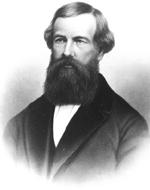Tags
Barnum, Carroll, Clinton, Edmark, elevator, invention, Otis, Phelps, Revere, safety brake, Topsy Tail
Do you have to know what you are inventing before you invent it? What if you are inventing yourself?
Tomima Edmark knew what she was inventing. She had seen another woman’s intricate French Braid hairstyle, one that must have taken a lot of time and trouble to put together, and she had thought that if she could design a tool that could create similar styles quickly and easily, people would snap that up. She could sell millions of them. Edmark was not a beautician. She was a marketing executive at IBM who wanted to be an entrepreneur. Her goal was to invent something that would define her success, and she was canny enough to recognize this opportunity when it occurred to her.
So with the end in mind, the inventing began. Edmark experimented at home with ordinary items like tape and knitting needles, trying to create from scratch a device that would make a complicated task effortless. In the end, she invented the Topsy Tail – a pointed flexible loop so simple in design that it is hard to believe it hasn’t been around since prehistoric times. Yet no one had thought of it before, and it did exactly the two things Edmark wanted it to do: it made it easy for a woman to give herself a fancy hairstyle, and it gave Edmark a product she could sell. In the early 1990s, she employed her marketing savvy to turn the Topsy Tail into a huge international hit, and to turn herself into a millionaire.
Elisha Otis, on the other hand, only thought he knew what he was inventing. He had good reason to think he knew; after all, he had always had a knack for mechanics, and had previously invented other devices – like a safety brake for trains and an automatic bread oven – that had done what he had expected them to do. So when he was hired to convert an abandoned sawmill into a factory, which required hauling lots of debris up from the lower levels, he thought he had a good idea for an invention that would let him safely use a pulley-driven hoisting platform. His system used springs that were kept coiled by the strain on the hoisting cable; if the cable snapped, the springs would be released, and a gripping mechanism would catch on toothed guide rails, keeping the platform from falling.
Otis did not consider his new safety brake a career-defining invention; it was, after all, one of the many creative contraptions he had thrown together because it had seemed right at the time. But when the factory’s business declined, he wondered if other businesses might be interested in the device. He sought orders for it, with no success, until he cleverly publicized his invention, with the help of P.T. Barnum, at the 1854 New York World’s Fair. In front of a crowd of people, he had himself pulled up on a platform, suspended only by a rope. The crowded then screamed in horror as a man with an axe cut right through the rope – but instead of plummeting to his death, Otis merely dropped a couple of inches, then proclaimed to the crowd, “All safe, ladies and gentlemen. All safe.” From that point on, there was constant demand for Otis’s “safety elevator” – and it literally shaped the world we live in today.
What Otis didn’t realize was that, while he had created a safety brake, he had invented the future. In the mid-19th century, the simultaneous gains in urban population and engineering knowledge were priming an urge to build higher. But no one would consider a building taller than about five stories, because there was no safe, economical way to move objects and people to the top of such a building. Otis’s safety elevator was a catalyst, releasing the pent-up desire to scrape the sky. In ways he could not have predicted from the basement of the abandoned sawmill, Otis’s gift altered the shape of business, architecture, and society forever.
What if you are inventing yourself? You could be an Edmark, or you could be an Otis. If you know what you want to make of yourself, you’re an Edmark. You know what you want to be – a doctor, a lawyer, a teacher, a chef – and you know that if you can make of yourself the best possible version of that, your career will be made, too. Like Tomima Edmark, you can achieve your goals with hard work and careful consideration of exactly what you need to succeed. Everyday life and the annals of history are filled with stories of men and women who have succeeded in just this way — people who made themselves what they wanted to be. Think Michael Phelps or Bill Clinton.
But you do not need to know what you are inventing. If you are developing parts of yourself – skills, accomplishments, knowledge – when it feels right, without a long-term vision, then maybe you’re an Otis. Just keep developing. The significance of what you have made of yourself may not become clear until you discover its value in a larger context – what it means to the rest of the world. Like Otis, you may find that your gifts are valued in ways you could not have predicted. Paul Revere, Lewis Carroll, people who discovered unforeseen value in what they had become – life and history are filled with stories of people like that, too.


